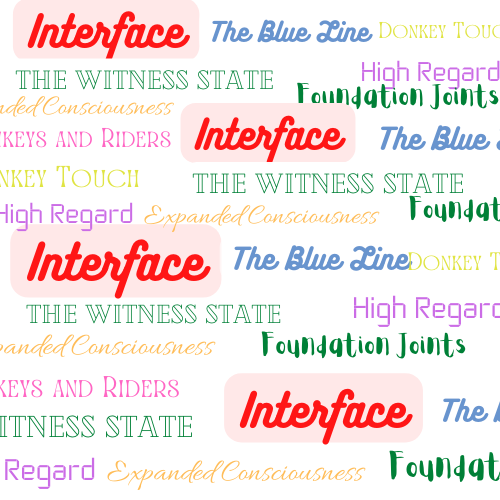
Interface is a term that can have many meanings. As a verb, it can mean to connect or mesh. One might say Zero Balancing works where energy and structure interface, where energy and structure connect or mesh in the body. As a Zero Balancing principle, however, we use the word as a noun. To be at Interface. It’s a place, a state, a border, a boundary.
The principle of Interface is introduced in Zero Balancing I and refined in the multiple classes that follow. It is one of the defining characteristics of ZB touch. Often confused with Donkey Touch, which is touching energy and structure simultaneously and consciously, Interface refers simply to the energetic boundary between practitioner and client. ZB touch is characterized by both Donkey Touch and Interface and employs both principles at the same time. Donkey touch enables us to connect with the whole person and Interface allows us to maintain a boundary between the whole of the client and the whole of ourselves. When at Interface, we are like two neighbors chatting over the fence that divides our properties.
Many years ago, I was at a study group with a student who stated adamantly that she didn’t see the point of using Interface and didn’t plan to use it. A bit later in the day, she and I had the occasion to practice the sitting assessment. I was the practitioner first and as my hands moved down her back, she became aware of some pain in her right lower ribs. When she was practicing on me, she was amazed to find the same pain in the same place on my lower ribs. “Look at that!” she exclaimed. “We have pain in the exact same place!” As I gently told her I didn’t actually have any pain, I saw the light bulb flash on. She realized she couldn’t tell whose pain was whose. And in that moment, she understood the value of Interface.
Like the aforementioned fence, a clear boundary serves both parties in several ways. In addition to clarifying what belongs to who, touch at Interface helps the client to feel their edges; where they stop and the practitioner starts.
Interface also communicates respect and safety. This has vital importance in any therapeutic relationship. There is no intrusion. Energy bodies remain distinct. And touch communicates this truth instantaneously in a way that cannot be conveyed with words. If someone offers you a limp and distant handshake while saying,”It’s nice to meet you,” do you really believe them? Instinctively, we credit touch over words.
Safe touch is foundational to creating a healing environment. We know the sympathetic nervous system becomes engaged in response to a real or perceived threat. It’s an instinctive survival tool and as such, is outside the conscious control of the client. No matter how much the client may want to relax, if our touch feels unsafe part of them will be monitoring us with every fulcrum. This vigilance is often amplified with clients who have experienced trauma.
Here is a place where the power of Interface becomes most evident. When every touch feels safe, our client can stop tracking our hands. Touching at Interface creates a sanctuary on your treatment table, where clients can drop their guard and drop more deeply into themselves.
